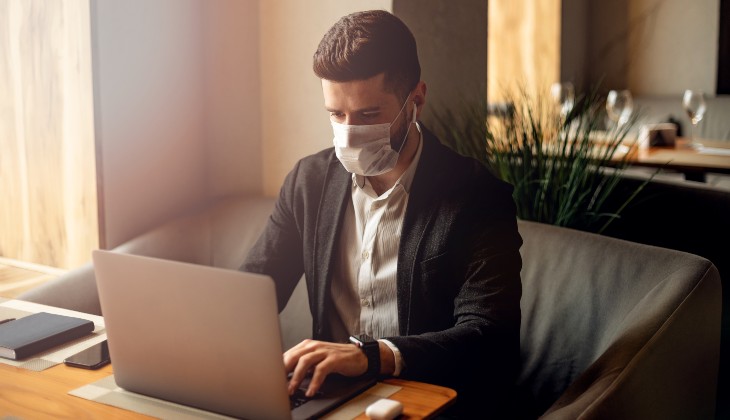COVID-19: The Technology Test for Businesses
By Peter Harrison | Saturday, 28 Mar 2020Technology will help many companies deal with the coronavirus. But Schroders' Chief Executive Peter Harrison thinks the company's culture and the relationship it develops with its workforce is of equal importance.
Every chief executive thinks about, and fears, the black swan events that could threaten their business.
The obvious nature of black swans makes this no easy task.
Some scientists have argued that the current pandemic crisis was a known threat and was, perhaps, inevitable. Black swan or not, COVID-19 is having a dramatic societal and economic impact. The question for chief executives now is: “how resilient is my business”?
This is the main topic of discussion in all FTSE 100 management teams. How do we operate if a significant proportion of staff fall ill? How do we help slow the spread of the virus? How do we maintain service levels? Most importantly, how do we keep staff safe?
Investment management companies, such as Schroders, also have a specific challenge: are we confident that trading operations will stand up, regardless of levels of staff absence?
For companies only recently offering serious consideration on how to respond on some of the broader points, it may be too late to offer effective solutions.
For those who have planned for this sort of black swan, the answer lies partly in technology. But of equal importance is a company’s culture and the relationship it develops with its workforce.
The strength of this social contract is critical at times of crisis. It is now being tested.
Forward-looking companies have been rightly battling over offering the best working environment, be it a state-of-the-art gym or access to an on-site doctor, or maybe even a dentist. But now, looking through the lens of the coronavirus pandemic, this was only level one of that contract.
The next level, it is becoming clear, is the test of whether a company can care for its staff — and the interests of clients and customers — when the system is exposed to extreme stress.
Technology is at the heart of this solution. We looked at this after I became chief executive of Schroders in 2016. The management team identified that to establish true cross-business collaboration and business resilience, technology would be the solution. Unhindered flexible working was the aim.
By empowering staff with genuinely agile working, you establish a deep relationship of trust. So we invested. We began by rolling out a system that allows people to work anywhere from any location at any time using just one log-in. They get full access to the systems they would usually get in the office; our client services teams can talk to clients, our fund managers can place trades.
This allowed us to empower staff to work the way that was best for them. It wasn’t just about being able to work from home, it meant they could mix in with other teams in our new offices. The building, after all, was purpose-built for this type of agile working. Collaboration has increased exponentially.
So when we made a decision earlier this month to move to split-team working, it wasn’t daunting.
The decisions made several years ago — to offer staff true flexibility — had put us in a strong position for the situation we faced.
The first challenge — to divide more than 5,000 people, across 34 locations into two teams, which would alternative home and office working — was straightforward. We had begun in Asia earlier in the year and now needed to roll it out globally.
Then last week a move to “minimum viable presence” — ensuring necessary cover in the office but with connectivity for most staff from home — was the next step, based on new government guidance.
Again, the change was made smoothly and efficiently. The key to this was that the technology was reliable and versatile.
With our virtual desktops, portfolio managers, analysts and traders get exactly the same experience in a disaster recovery site, at home or in the office. They immediately tap into the tools that have transformed our working practices. Previously manual processes have been swept away by Aladdin, a risk and portfolio management tool. Collaboration tools, messaging and chat applications help the traders stay coordinated with fund managers and operations while Bloomberg IB Chat and Symphony also allow secure messaging with brokers and counterparties. The list of new technologies goes on, and they are all available to our teams.
It means that today, I’m writing this from home. I, and the entire company, can work away from the office with confidence, regardless of the tasks performed. This approach helps protect our business operations but, most importantly, it keeps our staff safe and helps control the spread of the virus.
Frankly, I think this is how all businesses should work. This is not just flexible working; it’s about the deepening of our social contract with employees, it’s about putting our trust in them at all times, crisis or no crisis.
Nobody can know what the next black swan will be or when it will emerge, but that does not stop a company from being prepared for it. Empowering employees through constantly evolving technology is what makes this possible.
More broadly, it should be remembered that two million people who work in the gig economy lack a social contract, and we must think deeply about the implications for them at a time of stress. They are the real losers from this pandemic.

 Improving Immune System to Fight Wuhan Coronavirus
Improving Immune System to Fight Wuhan Coronavirus
 Coronavirus: How Employers are Coping with the Outbreak
Coronavirus: How Employers are Coping with the Outbreak
 Employers’ rights to collecting employee health data amid COVID-19
Employers’ rights to collecting employee health data amid COVID-19